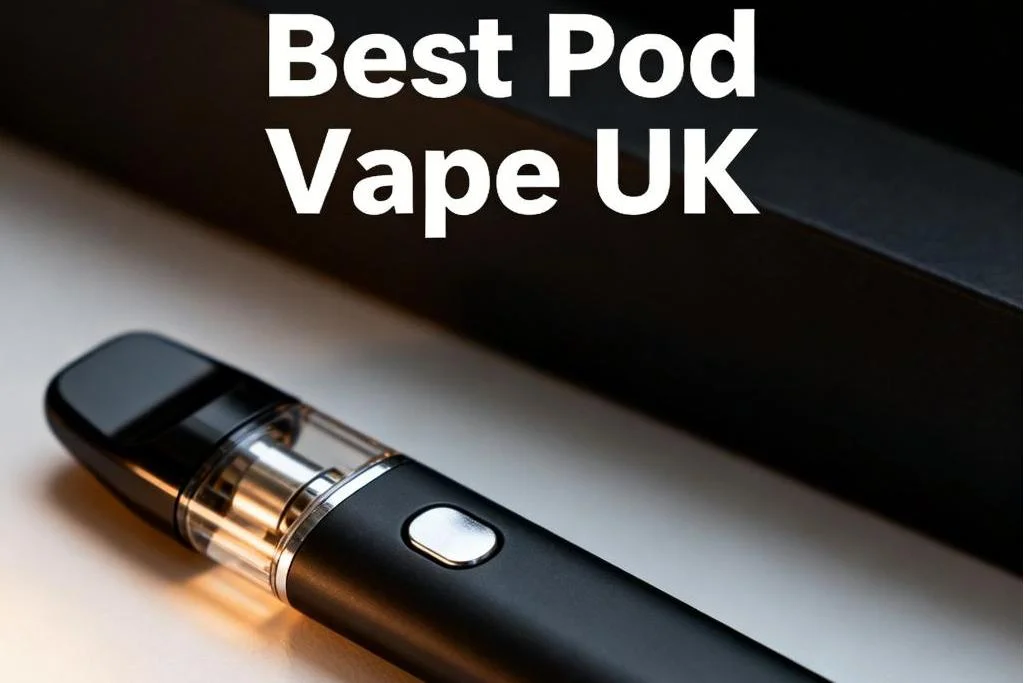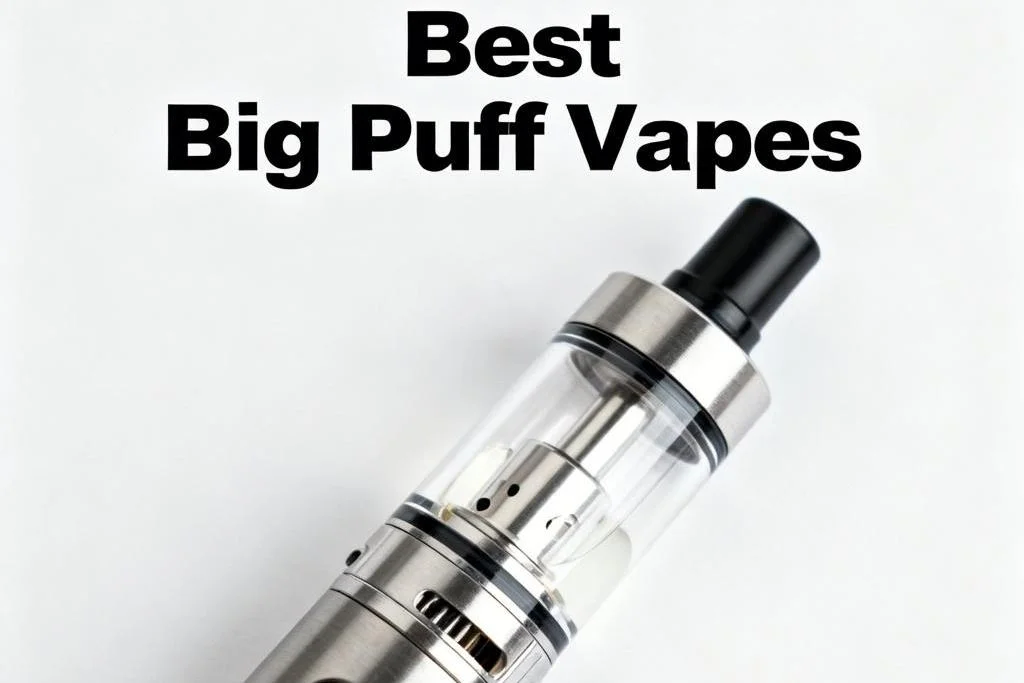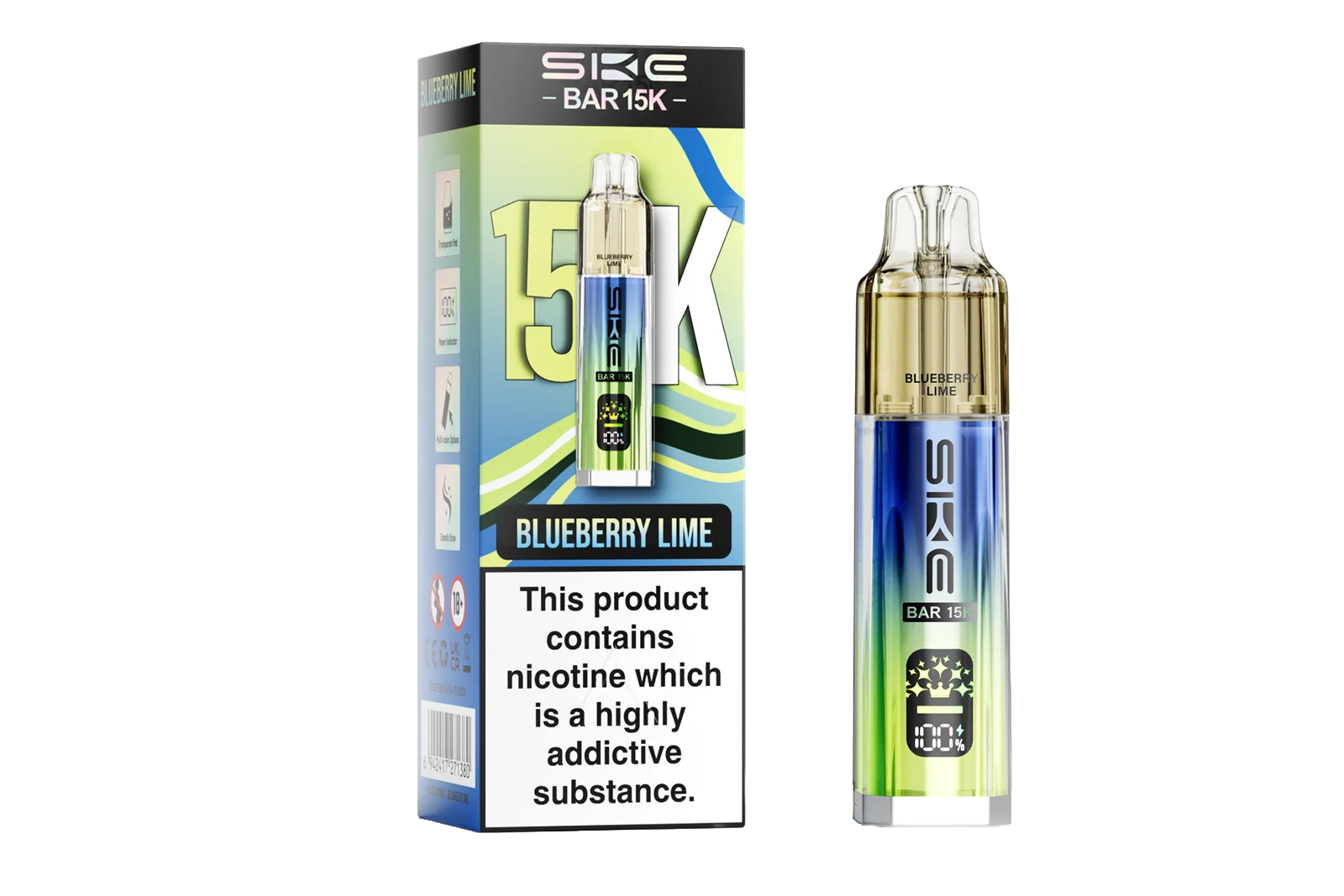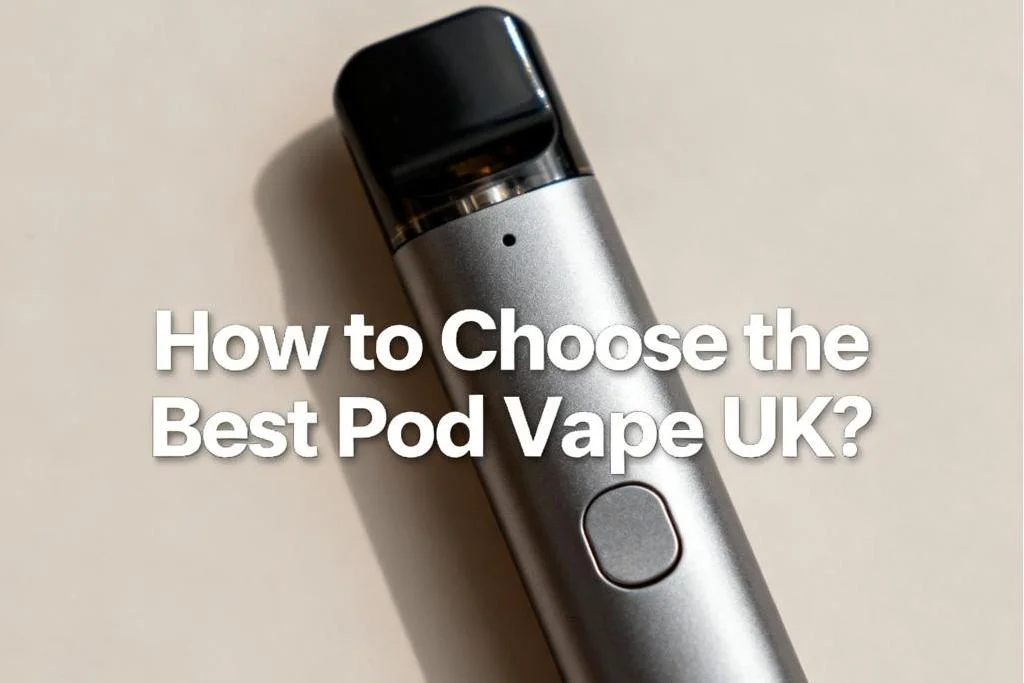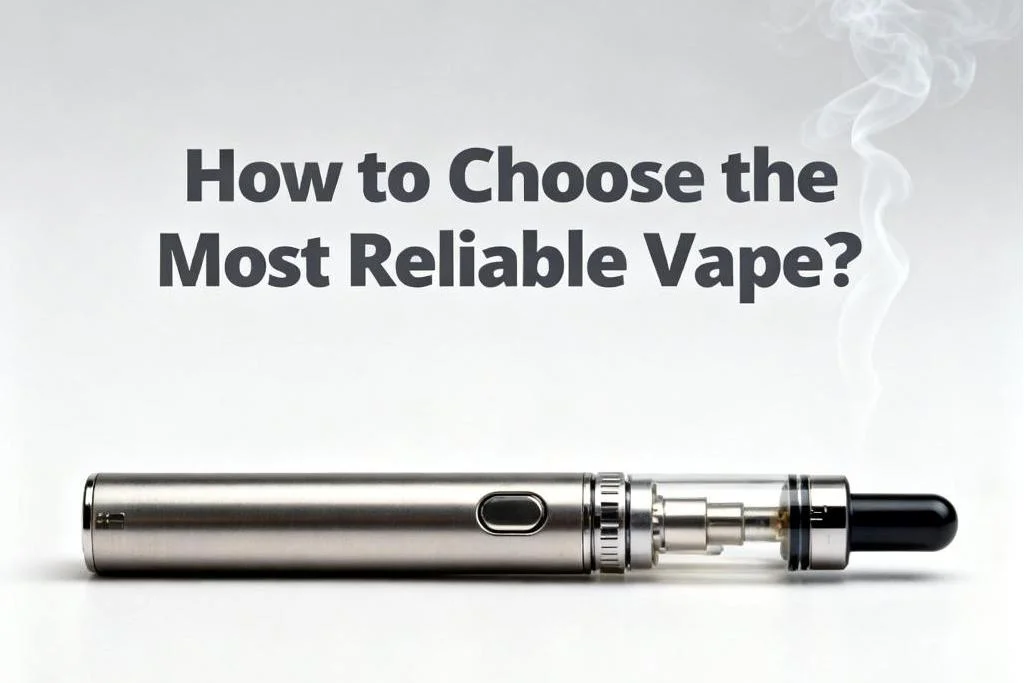Does Vaping Leave Residue? How to Tackle It?
When you think about the aftermath of vaping, one burning question often arises: does vaping leave residue? With the growing popularity of electronic cigarettes and their distinct difference from cigarette smoke, it's crucial to understand whether and how vaping impacts our surroundings. This article dives deep into the specifics, exploring whether vaping results in residue on walls, cars, clothes, and windows.

Does Vaping Leave Residue?
Absolutely. Vaping residue is a reality, much like the byproducts of cigarette smoke. When you take a puff from electronic cigarettes, the vapor you exhale isn't just a harmless mist that vanishes into thin air. Instead, it can leave behind a film, an accumulation composed of particles from the e-liquid and other substances, and can settle on surfaces in your environment.
Q1: Does Vaping Leave Residue on Walls?
Yes, vaping residue can indeed affect your walls. Just as cigarette smoke leaves a tell-tale yellowish stain over time, the vapor from e-cigarettes can deposit a thin layer of residue on wall surfaces, especially in areas with poor ventilation where the vapor can accumulate without being dispersed. Over time, this buildup can dull the paint, create streaks, and make your walls feel tacky.
Q2: Does Vaping in Your Car Leave Residue?
If you vape in your car, you're likely to notice a build-up of residue on various surfaces over time. Car interiors, particularly those with limited air vents and smaller enclosed spaces, can be susceptible to the accumulation of vape residue. This residue can coat the windows, dashboard, and upholstery, generating a sticky film that attracts dust and dirt.
Q3: Does Vaping Leave Residue on Clothes?
While vaping is less likely to leave a strong, lingering odor on your clothes compared to traditional cigarette vapes, it can still leave a residue. The fine particles in the vapor can settle on your clothes, and over time, this can lead to a slight film that makes fabrics feel less clean, affecting the freshness and cleanliness of your clothing.
Q4: Does Vaping Leave Residue on Windows?
Yes, vaping residue can leave a noticeable film on windows. Over time, the exhaled vapor which contains particles that can settle on surfaces such as glass can cause a hazy buildup that obstructs the clarity of your windows, making them look foggy or dirty. It's more pronounced in confined spaces with limited ventilation, where the vapor can’t disperse easily.

What Does Vaping Residue Look Like?
Unlike the dark, tarry stains from burned tobacco, vaping residue manifests as a thin, sometimes oily film that can coat surfaces over time, making them feel sticky or greasy to the touch.
What Does Vape Residue Look Like on Walls?
The residue from vaping on walls is subtle but perceptible, especially on light-colored paint with a slight discoloration or dullness where the vapor has consistently settled. The vaping residue can form streaks or patches that become more apparent under certain lighting conditions.
What Does Vape Residue Look Like on Windows?
The vapor particles, when they come into contact with the cooler surface of the glass, condense and leave a hazy film making windows look foggy or dirty, obstructing the view and reducing the amount of natural light that passes through. The residue on windows can be particularly stubborn, requiring a good glass cleaner and some elbow grease to restore clarity.
What Does Vape Residue Look Like on Car Interiors?
Vaping residue can accumulate quickly in cars due to the confined space and limited ventilation. You might notice sticky layers on the dashboard, seats, and especially on the inside of the windows that attract dust and dirt, making surfaces feel grimy.
What Does Vape Residue Look Like on Clothes?
While less visible than on hard surfaces, vaping residue can settle on clothing causing less fresh fabrics and a slightly tacky texture. Heavily vaped-in environments can lead to a more noticeable buildup, particularly on synthetic fabrics which can trap and hold the fine particles from the vapor.
What Does Vape Residue Look Like on Electronics and Furniture?
Electronics, with their intricate components and sensitive surfaces, can be particularly prone to residue buildup appearing as a fine, often oily film. Residue can accumulate in keyboards, screen crevices, and other inaccessible spots, where it attracts dust and dirt, potentially impacting performance as time goes on. Furniture, especially upholstered pieces, can also collect a film of residue incurring more dust, and making fabrics feel slightly sticky or greasy.

How Long Does Vape Residue Last?
Here's a closer look at how long vape residue can last in different settings:
A. Indoors:
In a poorly ventilated indoor environment, vape residue can accumulate quickly and remain for a considerable amount of time. If you're vaping regularly in a room with little airflow, the residue can build up within weeks, creating a noticeable film on walls, windows, and furniture.
B. On Walls and Ceilings:
The residue on walls and ceilings, especially in high-vape areas, can be subtle yet persistent. It may not be as immediately noticeable as smoke stains, but the buildup can gradually dull the paint, create a tacky texture, and last several months or even longer if left unattended, progressively becoming more ingrained into the surface.
C. On Windows:
Vape residue on windows is usually more apparent and the hazy film that forms can become noticeable after just a few weeks of regular vaping. If not cleaned regularly, this film can obstruct the clarity of the glass and be more difficult to remove.
D. In Cars:
The confined space of a car interior can lead to a quicker accumulation of vape residue. The sticky film can form on dashboards, seats, and windows within a few weeks of regular vaping.
E. On Clothes:
The residue on clothing is generally less durable, as regular washing can remove most of the particles. Typically, the residue on clothes won't last more than a few days to a week, provided the clothes are washed regularly.
F. On Electronics:
Vape residue on electronics can be quite persistent due to their intricate and often hard-to-clean nature. Without regular and careful cleaning, this residue can last for months.

How Do You Stop Vape Residue?
Stopping vaping residue from accumulating can be challenging, but with a few proactive measures, you can significantly reduce the buildup and keep your environment cleaner.
1. Improve Ventilation:
One of the most effective ways to minimize vaping residue is to confirm your space is well-ventilated. Using fans, opening windows, and utilizing exhaust systems can help disperse the vapor more effectively, preventing it from settling on surfaces. If you're vaping indoors, consider using air purifiers with HEPA filters to capture airborne particles.
2. Regular Cleaning:
- Walls and Ceilings: Regularly wipe down walls and ceilings with a mild detergent solution. For tougher residue, a mixture of vinegar and water can be effective.
- Windows: Clean windows with a high-quality glass cleaner at least once a week to remove any hazy film from vape residue.
- Furniture: Routinely dust and wipe down furniture with appropriate cleaners. Consider using a vacuum with an upholstery attachment and fabric cleaners periodically for fabric furniture.
- Car Interiors: Recommend applying automotive-specific cleaners to clean car interiors frequently, focusing on the dashboard, seats, and windows.
- Electronics: Gently use electronic-safe cleaning wipes to remove residue from screens, keyboards, and other devices to avoid damaging sensitive components.

3. Use Vaping Mats and Covers:
For example, placing a mat or cover on your desk or table where you vape can catch any residue to facilitate cleaning. Similarly, protective covers on your car seats can help prevent residue buildup on the upholstery.
4. Vape in Designated Areas:
It may help contain the residue in a smaller, more manageable space. Choosing a well-ventilated room to vape can reduce the residue spread and make it easier to clean and maintain.
5. Clean Your Vape Device Regularly:
Disassemble and clean your electronic cigarette regularly, following the manufacturer's instructions, to help it produce less residue and operate more efficiently.
6. Use High-Quality E-Liquids:
High-quality e-liquids often burn cleaner and produce less residue than cheaper, lower-quality options. Investing in better e-liquids can help reduce the buildup of residue in your environment.

In summary, the question "Does vaping leave residue" is clearly answered: yes, it does. While vaping residue is less noticeable and harmful compared to traditional cigarette smoke, it still settles on various surfaces, creating a thin, sticky film. Understanding the nature of vaping residue and how to combat it ensures a more pleasant experience for both vapers and non-vapers alike.
TABLE OF CONTENTS
- Does Vaping Leave Residue?
- Q1: Does Vaping Leave Residue on Walls?
- Q2: Does Vaping in Your Car Leave Residue?
- Q3: Does Vaping Leave Residue on Clothes?
- Q4: Does Vaping Leave Residue on Windows?
- What Does Vaping Residue Look Like?
- What Does Vape Residue Look Like on Walls?
- What Does Vape Residue Look Like on Windows?
- What Does Vape Residue Look Like on Car Interiors?
- What Does Vape Residue Look Like on Clothes?
- What Does Vape Residue Look Like on Electronics and Furniture?
- How Long Does Vape Residue Last?
- A. Indoors:
- B. On Walls and Ceilings:
- C. On Windows:
- D. In Cars:
- E. On Clothes:
- F. On Electronics:
- How Do You Stop Vape Residue?
- 1. Improve Ventilation:
- 2. Regular Cleaning:
- 3. Use Vaping Mats and Covers:
- 4. Vape in Designated Areas:
- 5. Clean Your Vape Device Regularly:
- 6. Use High-Quality E-Liquids:

